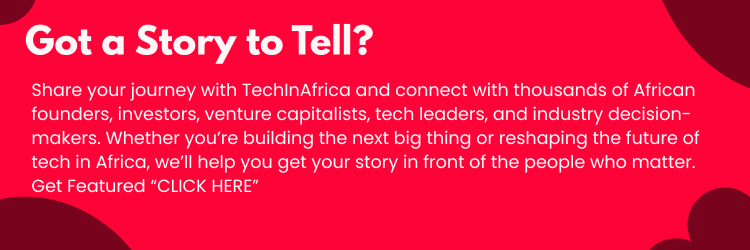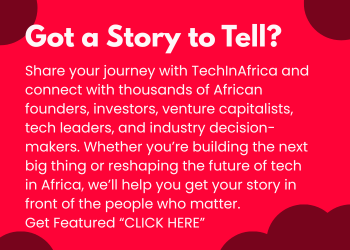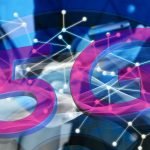The Internet is captivating, so African telcos are diving right in, buying spectrum licenses and launching new services. With more 5G networks on the way and more than a dozen already up and running, the new focus brings several questions.
Mobile World Congress (MWC), the most crucial event in the mobile communication industry, made its debut in Africa on October 27. On the same day, Safaricom in Kenya announced that 5G internet services would be coming to Kenya.
Just two days before the start of MWC Africa, the GSM Association (GSMA), the event’s organizers, published a paper that outlined the market possibilities for 5G internet in Africa.
But as African mobile network operators (MNOs) invest cash into setting up 5G services and governments sell new licenses, it’s getting harder to ignore questions about this new direction for mobile communications.
Since Vodacom launched its corporate 5G service in Lesotho in 2018, which served two enterprise customers, the continent has seen the deployment of commercial 5G networks in more than ten nations, with more on the way.
Since the continent was first permanently connected to the internet in 1995, it has undergone significant development due to this connection. However, this impact is not equally felt in terms of access and in the locations where digital technology, particularly internet connectivity, is utilized.
Voice, SMS, mobile data, and now broadband have connected hundreds of millions of people in Africa. This has led to a digital boom that has strengthened the region’s economy.
But there are still hundreds of millions of people who don’t have access to the internet. There have been a lot of improvements in how mobile technology is used, but it has been harder to get people to use it.
There has been a lot of progress in getting more people to use mobile technology, but it has been harder to get people to use it.
For example, only 22% of Africans use the internet, even though 83% of them live in areas where mobile internet is available, according to the 2022 State of Mobile Internet Connectivity report (PDF) published by GSMA last October.
GSMA says people don’t use the internet because they can’t afford devices that can connect to it. If they already have such devices, the internet bundles they need to use them.
On the other hand, many people who don’t use the internet use 2G or 3G phones to talk on the phone and send or receive text messages.
The only reason they are part of the mobile digital economy is can connect to 2G or 3G networks. This is how the shopkeeper in Nairobi can send money to his family in the Rift Valley using M-Pesa. But this picture now has a new problem.
Big economies are getting rid of their 2G and 3G networks, and some African countries, like South Africa, want them gone as soon as 2024 so they can get better wireless coverage from 4G and 5G networks.
African 5G acceleration is costly. 3G and 4G investments have covered 25% of Africa’s population with mobile broadband.
Only 22% of the 83% of Africa’s population that has access to mobile broadband use the internet. This means that the 22% who do use the internet are paying for the 61% who can’t afford it.
Yet, as African economies get worse because of bad management and a global recession, telcos are deciding to make early bets on 5G technology in the hopes that Africa’s digital evolution will move fast enough to bring economic benefits.
One way they do this is by letting people buy 4G-capable devices and pay for them in bits through device financing.
Several of these kinds of deals are being made or already exist, but people are still painfully slow to use them. Some barriers to affordability are caused by policy mismatches, like when governments put high taxes on smartphones.
It is a common problem across Africa, and it occurs when the professed digital inclusion aims of governments come into conflict with the need to fill budget shortfalls and the widespread practice of rent-seeking.
Kenechi Okeleke, director of regional, social, and policy research at GSMA Intelligence, told TechCabal at MWC that for 5G devices to take off, they need to be available and, more importantly, more importantly, affordable. Okeleke is the main author of the released 5G in Africa report.
Okeleke tells TechCabal that fixed wireless access (FWA) 5G is the biggest use case for 5G in Africa so far. FWA 5G is made for offices, people who work from home, and students who want faster internet connections.
Because 5G networks need to be very dense to live up to their promises, this new focus means that telcos are doubling down on the users who are already very connected. Also, it is still unclear how much better mobile 5G wireless coverage is than fibre connectivity.
Concerns about how the different frequency bands where 5G is being used in Africa could affect regional and transcontinental integration have also been raised.
OOkerekefrom GSMA said that devices that work in places where 5G is set up on sub-1Ghz bands might not be able to use 5G services in areas that use higher frequencies.
In terms of global politics, African countries have shown that they are willing to work with the Chinese 5G infrastructure that is already there, even though the US has a policy that is against Chinese digital technology.
Stephane Richard, CEO of French telecom giant Orange, told Reuters at last year’s Mobile World Congress in Barcelona, “We’re working more and more with Chinese vendors in Africa, not because we like China, but because we have a great business relationship with Huawei.” Orange is the second-largest mobile carrier in Africa.
On the one hand, it’s a good thing that African MNOs don’t always agree with each other. On the other hand, it’s not clear how much Africa is contributing to the policy and technical decisions that are shaping the development of 5G infrastructure.
African operators have been told to use various technologies, so they don’t have to depend on just one supplier. But, for example, about 70% of all 4G infrastructure on the continent is already made up of Huawei equipment.
But, for example, about 70% of all 4G infrastructure on the continent is already made up of Huawei equipment. Arthur Goldstuck, analyst and MD at World Wide Worx, told Connecting Africa in 2019: “From what I know, Huawei has a 70% market share in networking infrastructure across Africa, and that’s not easy to take down.”
Lastly, the GSMA report admits that one problem with rolling out 5G services in stages is that it could make it harder for local operators and other ecosystem players to take advantage of economies of scale.
The report suggests that telcos put some of their goals on hold and work together to align their 5G plans by sharing networks. “GSMA advises that markets with enough size can have a bigger impact on how 5G is developed worldwide and can also get low unit costs for rolling out networks.”
In Nigeria, for example, the government wants to auction off four more licenses, even though only one of the two licenses it has already given out is being used.
There is a lot of hope and hype among telcos about what 5G technology could do for Africa, but getting there will require more cooperation than competition.
It will also need strong policymaking and implementation to stop oligopolies from forming and ensure consumer protections aren’t just on paper. If people aren’t living better, farming with better tools, or making modern machines, they may never need more than voice and SMS calls.
Also, there’s no need to rush. A 2019 GSMA report said that waiting a while before 5G is used on a large scale could be good for Africa because it would give the technology time to develop and be thoroughly tested in other markets. It would also make it possible for 5G equipment and devices to take advantage of economies of scale, which could bring down costs.
Since there is no first-mover advantage to be gained, and Africa isn’t doing much to help develop 5G technology, we might be able to avoid costly first-mover mistakes by studying how 5G is being used in other markets. Also, telcos and governments can invest in improving access to and use of near-peer technologies like 4G while they learn from how 5G is rolled out in other markets.





